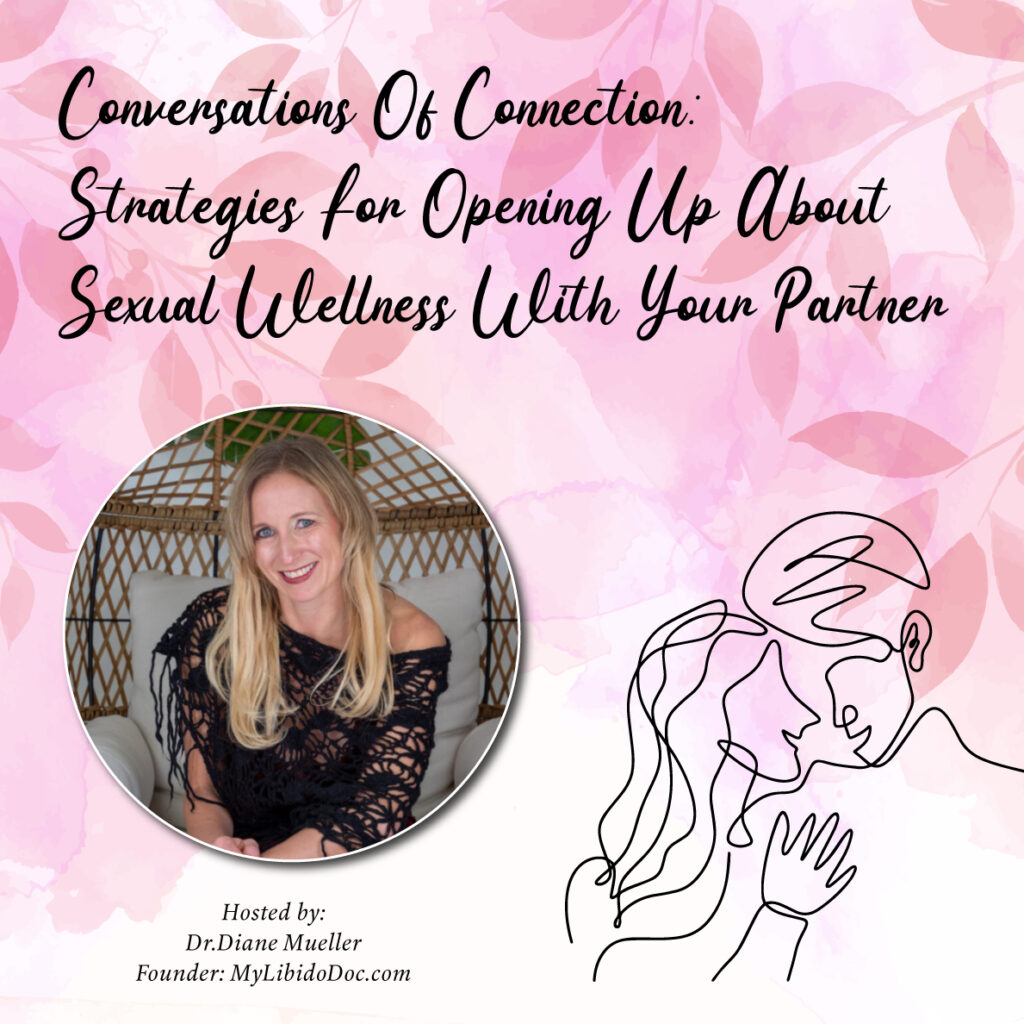Table of Contents
If you are working on your libido, you may wonder what is ED in women? In men, erectile dysfunction (ED) can be caused primarily by circulatory, neurologic, psychologic, metabolic causes. There is so much research on men and their sexuality, and so much less on females. So then, what is ED in women?
Key Takeaway
- Erectile Dysfunction (ED) in women, also known as Female Sexual Dysfunction (FSD), affects around 40% of women globally.
- Key indicators include physical symptoms such as diminished vaginal lubrication, pain during intercourse, difficulty achieving orgasm and emotional symptoms like anxiety, depression, and relational problems.
- Both physical (hormonal changes, chronic illnesses, certain medications) and psychological factors (stress, anxiety, depression) contribute to ED in women. Cardiovascular health also plays a crucial role.
- Healthy lifestyle choices such as balanced nutrition, regular exercise, stress management, adequate sleep, and hydration can help with ED.
- Effective coping strategies include acceptance, positive reframing, and seeking emotional support through counseling or support groups. Open communication with healthcare providers and partners is essential for managing FSD.
Understanding ED in Women
There are many factors that can affect a woman’s libido. Address nutrition, relationship issues, and lifestyle factors first. Consider medication last as it can have side effects. Most importantly, keep in mind that you can change your sex life. No matter how old you are a low libido is not permanent! You can read more about this topic on our blog: Low Libido In Women
In men, ED really comes down to a dysfunction in their erectile tissue making it difficult for them to engage in intercourse. We could then say the female version is having a difficult time engaging in intercourse. This could be due to vaginal dryness, vulvar or pelvic pain, lack of circulation and blood flow to the female erectile tissue, or even simply having a low libido.
If you answered yes to any of these, your libido is probably low:
- Do you feel uninterested in sex?
- Do you have little interest in erotic desire or pleasure?
- Do you have few to no sexual thoughts or fantasies?
- Are you disinterested in initiating sex?
- Does having sex feel like a chore? Are you just not into it?
- Do you feel like you no longer have a “sex drive”?
Libido varies from woman to woman. According to Dr. Risa Kagan, MD, 1 in every 10 women have a low sex drive or are worried about it. Other sources say that it is as many as 70% of women! There is no “normal” libido level – what matters most is how YOU feel about your current sex life and whether or not you want to change it. Libido (and loss of it) is very individual.
Don’t compare how often you have sex with how often others do. You and your partner need to be happy with your level of sexual activity. Also, it is not uncommon in a relationship for one person to have a different level of libido than the other person. This does not mean one person is good and the other bad – they are just differences and if affecting the relationship can be managed.
Signs and Symptoms of ED in Women
Understanding the signs and symptoms of sexual dysfunction in women is important for identifying and addressing the condition. You may notice a mix of physical and emotional symptoms.
Physical Symptoms
Physical symptoms can manifest in various ways. A lack of sexual desire, often associated with low libido in women over 40, is one of the primary indicators. You might find it hard to reach orgasm or notice disruptions in your sexual response cycle. Pain during intercourse, known as dyspareunia, can also be a significant concern. Vaginal dryness, excessive tightness, or muscle spasms might cause discomfort, influencing your ability to enjoy sex.
Emotional and Psychological Symptoms
Emotional and psychological symptoms can also affect your sexual wellbeing. You may experience a lack of sexual satisfaction, leading to anxiety or fear around sexual activity. Negative emotions during sex, poor mental health, and depression are common issues. Trauma, whether recent or past, can significantly impact your sexual function. Relationship difficulties might further exacerbate the problem, creating a cycle of fear and dissatisfaction.
Causes of Female Sexual Dysfunction (FSD)
Female Sexual Dysfunction (FSD) often includes various issues affecting women’s sexual health and wellbeing. Understanding the causes can guide you toward effective solutions.
Physical Causes
- Hormonal changes, particularly those associated with menopause, pregnancy, and childbirth impact libido. Fluctuations in estrogen levels often lead to decreased libido and vaginal dryness, making intimacy less enjoyable. For example, many women in their late 40s experience reduced sexual desire due to menopause.
- Chronic illnesses such as diabetes and heart disease can affect blood flow, nerve function, and energy levels, all contributing to FSD. Multiple sclerosis, for instance, might lead to physical discomfort during sex due to nerve damage.
- Antidepressants, blood pressure medications, and chemotherapy drugs frequently decrease sexual desire and arousal. If you’re taking these medications, consult your healthcare provider about possible alternatives.
- Scarring from surgery or radiation treatment, particularly in the pelvic area, can alter sexual experience and sensation. Women who have undergone mastectomies or hysterectomies often report changes in sexual response, which can lead to FSD.
- Infections, such as genital herpes, can cause pain and discomfort during intercourse. These symptoms may deter you from engaging in sexual activities, affecting your overall sexual health.
Psychological Causes
- Stress, anxiety, and depression can lower libido, making intimacy challenging. For example, work-related stress might leave you too drained to enjoy sexual activity.
- Relational issues, such as lack of communication or unresolved conflicts with your partner, often exacerbate FSD. These emotional barriers can lead to anxiety or fear about sexual performance, further diminishing desire.
- Traumatic experiences, including sexual abuse, can have long-lasting effects on your sexual health. These traumatic memories might resurface during intimate moments, causing distress and avoidance.
- Low self-esteem and body image issues also contribute to FSD. If you feel uncomfortable with your body, this discomfort can translate into a lack of sexual confidence.
By addressing these physical and psychological causes, you can take steps toward improving your sexual health and overall quality of life.
Key Diagnostic Tests
If the issue is physical, several diagnostic tests can help pinpoint the causes of ED in women:
- Hormone Level Tests: Measuring levels of estrogen, testosterone, and thyroid hormones can identify hormonal imbalances.
- Blood Tests: Testing glucose, lipid profiles, and other markers can detect conditions like diabetes or cardiovascular diseases that impact sexual function.
- Pelvic Ultrasound: Imaging tests can reveal structural abnormalities in reproductive organs.
- Psychological Assessments: Evaluating mental health conditions like depression, anxiety, or past trauma provides essential insights into FSD.
So What Can We Do About ED?
Ladies! There are a wide variety of ways to take on female erectile dysfunction …
Lifestyle and Home Remedies
What’s are the first things you can you do if you want to make changes in your sex life?
- Maintain a healthy lifestyle. Limit alcohol, get exercise, eat a healthy diet to maintain a healthy weight.
- Reduce stress (try meditation, breathing exercises, yoga, and time in nature).
- Sleep Quality: Adequate sleep is important for hormone regulation and overall energy levels. Ensuring you get 7-8 hours of sleep each night can help balance your mood and improve your interest in sex.
- Hydration: Staying hydrated affects your overall health and sexual lubrication. Drinking at least 8 glasses of water a day can improve vaginal dryness issues that sometimes accompany aging.
- Find joy and gratitude in your day every day to change your mood.
- Be the best person that you can be every day so your partner finds joy being with you.
- Rekindle your relationship and make quality time with your partner a priority. Do what you can to improve your relationship. An unhappy relationship makes it hard to feel any sexual interest in your partner.
- Communicate with your partner! Let them know the things that bring you pleasure and learn the same about them. Also talk about frequency of sex – it is good to get this out in the open, discuss it if you want different amounts of sex, and compromise so you both are happy.
- Spice things up! You may have gotten in a rut so try new things. Often times just talking about other options or things you haven’t tried can be pleasurable. Novelty is huge for reactivating sex drive. Novelty can be as simple as trying a new position, trying a new lube, putting on a new outfit, or having a date night at a new location. It can also be much more wild than this! Explore with your partner what sort of small or larger changes can really work to add novelty to your intimacy!
- Explore your own sexuality. Where do you want to be touched? What level of touch or pressure is pleasurable? Learn what brings you pleasure so you can ask for it.
- Focus on “pleasure rather than performance”. This intimacy can lead to more sex.
- Your partner may fear they are hurting you when having intercourse. Reassure them, communicate about it.
- When you are with your partner stay focused and enjoy the pleasure of sex!
If you have tried these things and still are not happy with your sex drive, then it is recommended you seek professional help. Some of the options for help include include the following
Treatment Options
- Medication management from your doctor (most commonly hormone replacement therapy, but any medication should be directly related to the root cause of your imbalances)
- Treatment from a doctor for a medical condition or illness
- Talk to a doctor to rule out any medical reasons for a low libido
- Couples counseling to resolve any relationship trauma or habits
- Individual counseling (especially if struggling with body image issues, low self-esteem, or trauma from childhood)
- Testing and possible hormone therapy or supplementation to support low hormones or other root causes of imbalances.
Natural Treatments
Several natural treatments may offer relief from endometriosis symptoms. Herbal supplements like turmeric and ginger possess anti-inflammatory properties. Omega-3 fatty acids, found in fish oil, are known for their anti-inflammatory effects. Some people find relief from endometriosis pain through the use of traditional Chinese medicine, which includes herbal remedies and acupuncture. Essential oils, including lavender and clary sage, may also provide indicator relief when used in aromatherapy.
Emotion-Focused Coping Strategies
- Acceptance: Acknowledge your feelings and focus on proactive measures.
- Positive Reframing: Shift your perspective to see challenges as opportunities.
- Emotional Support: Reach out to friends, family, or support groups.
Each treatment option has its benefits and limitations. Consulting with healthcare professionals to determine the best course of action considering your specific condition and needs is essential.
Conclusion
Understanding Female Sexual Dysfunction (FSD) and how it affects your life is really important. By spotting the symptoms and getting the right medical help, you can make big strides toward feeling better. Making lifestyle changes and looking into treatment for things like Endometriosis can really boost your well-being. Remember, dealing with FSD isn’t just about the physical stuff; it’s emotional and social too. Talking openly with your doctors and partners can make a huge difference. Focus on your health and take steps to improve your quality of life.
Herbenick D, Reece M, Sanders S, Dodge B, Ghassemi A, Fortenberry JD. Prevalence and characteristics of vibrator use by women in the United States: results from a nationally representative study. J Sex Med. 2009 Jul;6(7):1857-66. doi: 10.1111/j.1743-6109.2009.01318.x. Epub 2009 May 7. PMID: 19453881.





